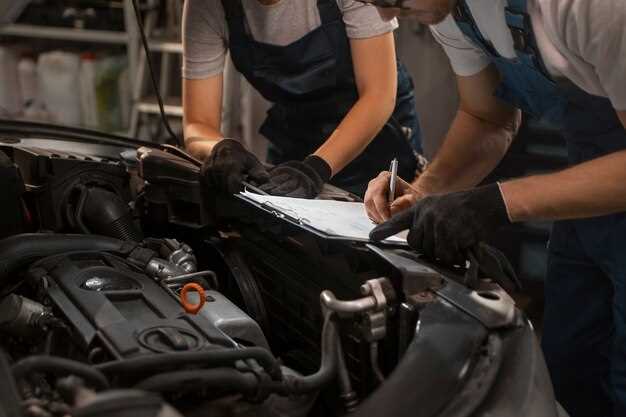
How to inspect your power steering system
- Dominique Kaye
- 0
- Posted on

The power steering system plays a crucial role in ensuring a smooth and safe driving experience. However, like any automotive component, it requires periodic inspection to maintain its efficiency and reliability. A well-functioning steering system not only enhances maneuverability but also contributes to overall vehicle safety. In this guide, we will outline the straightforward steps to inspect your power steering system, making it accessible to all car owners.
One of the most common issues encountered in power steering systems is Hydraulic fluid leaks. These leaks can lead to a significant loss of steering assistance, making it essential to address them promptly. Identifying the source of any fluid leaks is one of the first steps in ensuring your steering system is in optimal condition. Keeping an eye on fluid levels and the condition of hoses and connections will help you catch problems before they escalate.
Regularly inspecting your power steering system can save you from costly repairs down the line. By understanding the components involved and their importance in the steering mechanism, you can cultivate a proactive approach to vehicle maintenance. Let’s dive into the essential aspects of power steering system inspection, focusing on key indicators of wear and tear, and the steps to take when issues arise.
Identifying Common Signs of Power Steering Leaks

Power steering systems are essential for smooth vehicle handling, and leaks can disrupt this functionality. One of the most obvious signs of a power steering leak is the presence of a fluid puddle under your vehicle. This fluid typically has a reddish or clear color and is thicker than regular oil.
Another common indicator is difficulty in steering. If you notice that your steering wheel feels heavier than usual or requires more effort to turn, it could be a sign of low fluid levels due to a leak. This unexpected stiffness can affect your control over the vehicle.
You may also hear unusual noises while turning the steering wheel. A whining or squealing sound often indicates a power steering fluid leak. This noise occurs because the power steering pump is working harder to compensate for the lack of adequate fluid.
Additionally, if you observe that the power steering fluid reservoir is consistently low, it suggests a leak in the system. Regularly checking the fluid level can help you catch leaks early before they lead to severe damage.
Inspecting the hoses and connections for any signs of wear or damage can also provide insights into potential leaks. Cracks, frayed edges, or loose fittings in these components are common areas where power steering fluid might escape.
Step-by-Step Guide to Inspecting Power Steering Fluid Levels
Regularly checking your power steering fluid levels is essential for maintaining optimal steering performance. Follow this step-by-step guide to ensure your power steering system is in good condition.
1. Prepare Your Vehicle: Park your vehicle on a level surface and turn off the engine. Allow it to cool for a few minutes to avoid any burns from hot components.
2. Locate the Power Steering Fluid Reservoir: Open the hood and find the power steering fluid reservoir. It is typically a translucent container marked with a steering wheel icon or labeled “Power Steering Fluid.”
3. Check Fluid Level: Inspect the fluid level through the reservoir’s markings. There should be “MIN” and “MAX” indicators. If the fluid is below the “MIN” line, it’s time to add more fluid.
4. Inspect for Leaks: Examine the area around the reservoir and steering components for any signs of fluid leaks. Look for puddles or wet spots, which indicate a potential issue within the system.
5. Add Fluid if Necessary: If levels are low, use the recommended power steering fluid for your vehicle. Open the reservoir cap, and add fluid slowly to avoid overfilling. Replace the cap securely after adding fluid.
6. Test the Steering System: Start your engine and turn the steering wheel left and right to circulate the fluid. Listen for any unusual noises, which could signal a problem with the power steering system.
7. Recheck Fluid Levels: After testing, recheck the fluid level to ensure it remains within the proper range. This will confirm that your steering system is functioning effectively.
By following these steps, you can maintain your power steering system’s health and ensure smooth steering while driving. Regular inspections help catch any potential issues early and prevent costly repairs.
How to Pinpoint and Repair Power Steering Hose Issues

Identifying issues with your power steering hose requires a systematic approach. Start by visually inspecting the hose for any visible cracks, fraying, or leaks. Pay close attention to the connections at both ends of the hose, as these areas are prone to wear and tear.
Next, check the fluid level in the power steering reservoir. A low fluid level can indicate a leak in the system. If you notice any fluid on the ground beneath your vehicle, it may be a sign of a leaky hose. It’s essential to determine the type of fluid as well, ensuring it’s compatible with your power steering system.
For a more thorough diagnosis, perform a pressure test on the power steering system. This can help identify weak spots in the hose that may not be visible. Use a pressure gauge to measure the pressure while turning the steering wheel. A drop in pressure can indicate a blockage or a compromised hose.
If a problem is detected, repairing the hose often involves replacing it. Begin by relieving the system pressure to avoid spills. Remove any clamps holding the hose in place and carefully disconnect it from the steering gear and pump. Ensure that the new hose is of the correct specification for your vehicle. Once installed, reattach the clamps securely.
After replacing the hose, refill the power steering fluid to the recommended level and check for leaks around the new connections. Start the engine and turn the steering wheel from lock to lock, monitoring for any unusual noises or performance issues. This ensures that the repair was successful and the power steering system is functioning correctly.
